Look beyond the big names and discover the new-wave wineries
In recent years a number of small, very quality-minded, wine producers have emerged in Moldova.
Some of them started out making wines in their homes, just for their owns consumption. Others worked in bigger wineries and decided to try their luck and start out on their own. Some are very new but promising. Some have already gained an international reputation.
Small Moldovan wine producers to watch for:
- Gogu Winery
- Atu Urban Winery
- Sava
- Et Cetera
- Equinox
- Carpe Diem
- Novak Winery
- Minis Terrios
- Vinaria Pripa
- Pelican Negru
This is an article in our series on wines from Moldova:
- Moldova, an exciting “new” wine country with a long history | Britt on Forbes
- Moldovan wine classics in modern versions: Chateau Purcari and Castel Mimi
- Wine in Moldova: Château Vartely and Asconi Winery, two strong newcomers after independence
- Moldova’s emerging small, high-quality wine producers
- Historic bottles and traditional gastronomy in Moldova’s amazing underground wine world
- Wine tourism at Vinuri de Comrat in Moldova, a passionate project
More articles on Moldovan wines on BKWine Magazine here.
Gogu Winery, Stefan Voda
Ilie Gogu won his first medal in 2009. This was before he was even allowed to bottle his own wines. At the time he only had a very small winery in the house and a cellar he had dug himself. “It started as a passion, a hobby”, he says, “but now I work 100% with my own wines”.
But Ilie was involved with wine long before he started his own business. After studying winemaking, he worked for one of the biggest wine companies in Moldova. After the Russian embargo in 2006 he, like so many others, needed to make other plans. In 2011, when the requirement to have a(n expensive) license to bottle and sell wines disappeared, he decided to concentrate on his own wines.
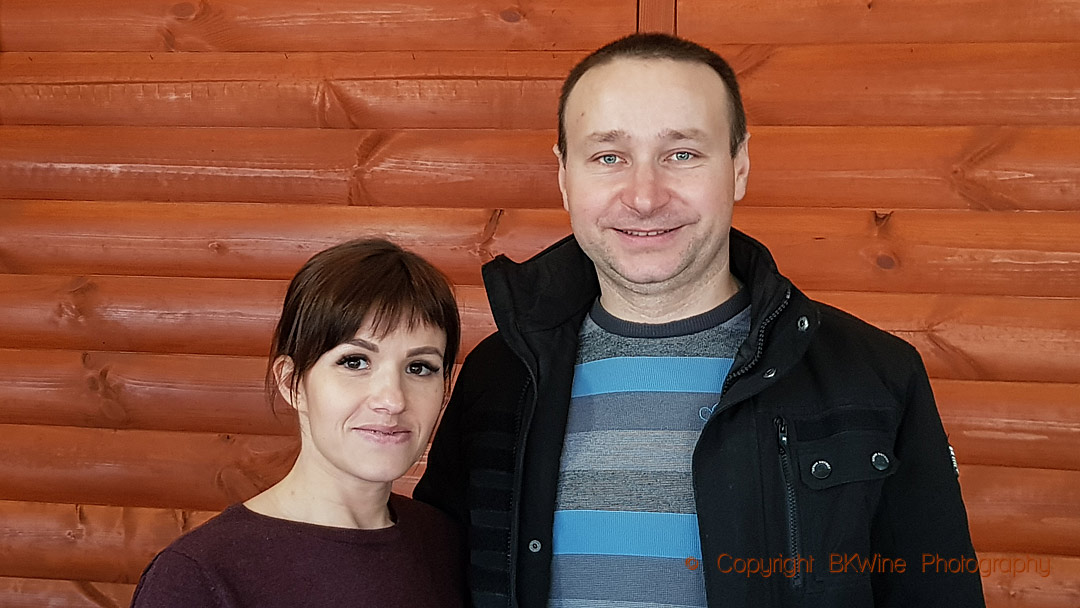
He runs Gogu Winery together with his wife Svetlana. They quickly understood that wine production should be linked to tourism. “The customers want to see where the wine is produced”, he says. They have therefore built a brand-new tasting room. They are also planning to build a new winery in the vineyard, about 7 kilometres from the house, as well as a small hotel and restaurant.
Ilie and Svetlana do more or less everything themselves. They sometimes hire seasonal workers for harvest and a few other things. It is still a small production. They are happy with that and they sell everything they produce. They export some of it, mainly to Romania for the moment. “The Asian market is interesting for red wines”, says Ilie. “We have demand but not availability”.
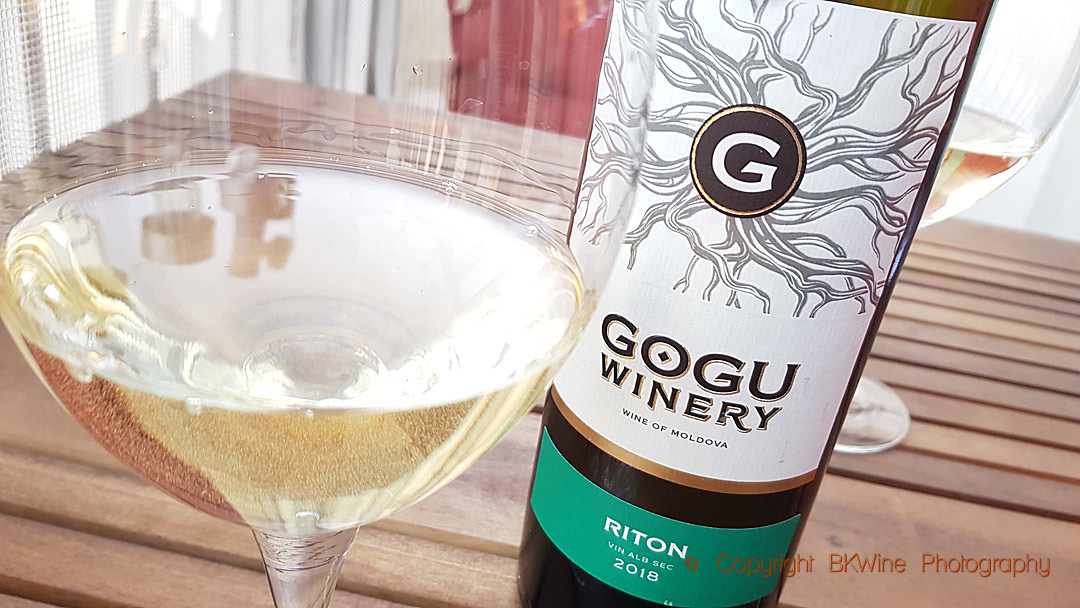
The wines are excellent. Both Ilie and Svetlana like the local varieties, such as feteaska alba, feteaska regala, rara neagra. They also use a crossing made in Moldova during Soviet times called riton. “This grape is normally used for the Moldovan brandy called Divin”, Ilie explains.” He was curious, though, to try it for wine. The first three years he was not happy with the result. But now he has finally succeeded. What did it, he thinks, was the fact that he lowered the yields drastically by severely trimming the vines. Normally, riton gives 30 tons per hectare, which is enormous (~230 hl/ha).
His Gogu Riton 2018 has a good texture and a full-bodied, pleasant mouthfeel. He only has a quarter of a hectare so far of this grape so it is still more of an experiment.
Gogu Feteasca Alba 2018 is fresh and floral with lovely intense aromas. The Gogu Blanc de Merlot 2018, a white made from merlot – unusual – shows red fruit aromas, some tannins and has a long, tasty finish. The light coloured Gogu Rosé Cabernet Sauvignon 2018 is totally dry and light in style with fresh fruit combined with a surprisingly good structure.
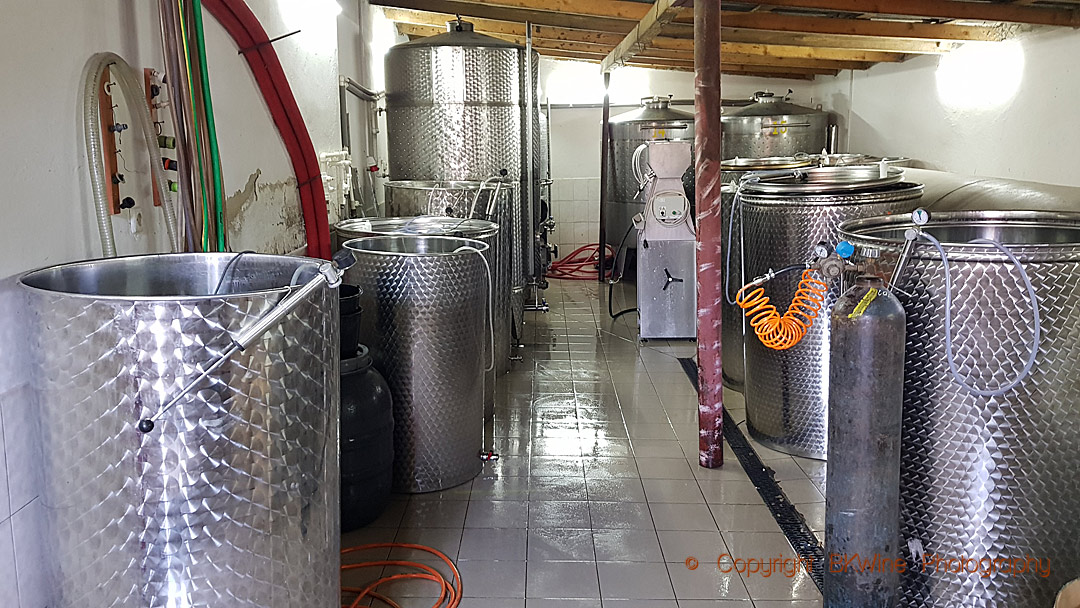
Gogu Metafora is the premium wine. The white Metafora is made from 40% chardonnay, 40% sauvignon blanc and 20% feteasca alba. The chardonnay and the sauvignon are barrel fermented and barrel-aged, the feteaska alba not. “This way the wine is less heavy”, says Ilie, “It has to be drinkable.” It is a delicious wine, rich but balanced and with an uplifting bitterness at the end.
The red Gogu Metafora 2017 spends 18 months in new and old barrels. The grapes are cabernet sauvignon, merlot and the Georgian grape saperavi, everything from old vines, around 50 years old. There is a lot of concentration and intensity here, both on the nose and the palate but it manages to stay elegant nevertheless. The tannins are ripe and quite smooth. You can drink in now with pleasure or keep it.
The Gogu couple has gained recognition for their wines both in Moldova and internationally. There have been many medals since 2009. They are well deserved.
Approximate prices for the wine at the winery are 6-15 euro.
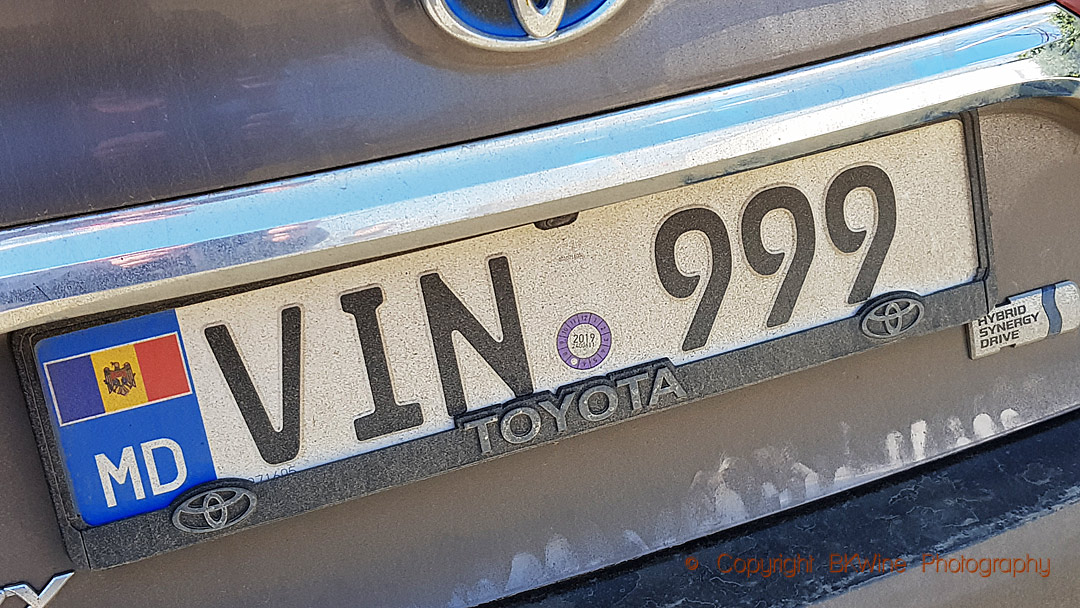
Atu Urban Winery, Codru
A brightly painted wall on the outskirts of Chisinau, the capital of Moldova, with the name Atú Winery written all over it, indicates that we have reached our destination. This colourful welcome immediately shows the philosophy of the winery. The owners, Victor and Vlada Vutcarău, want to attract young people or, as they say, people of any age with a young mind. The place has a distinctly creative feeling to it with walls painted (also inside) by artists and its designer labels.
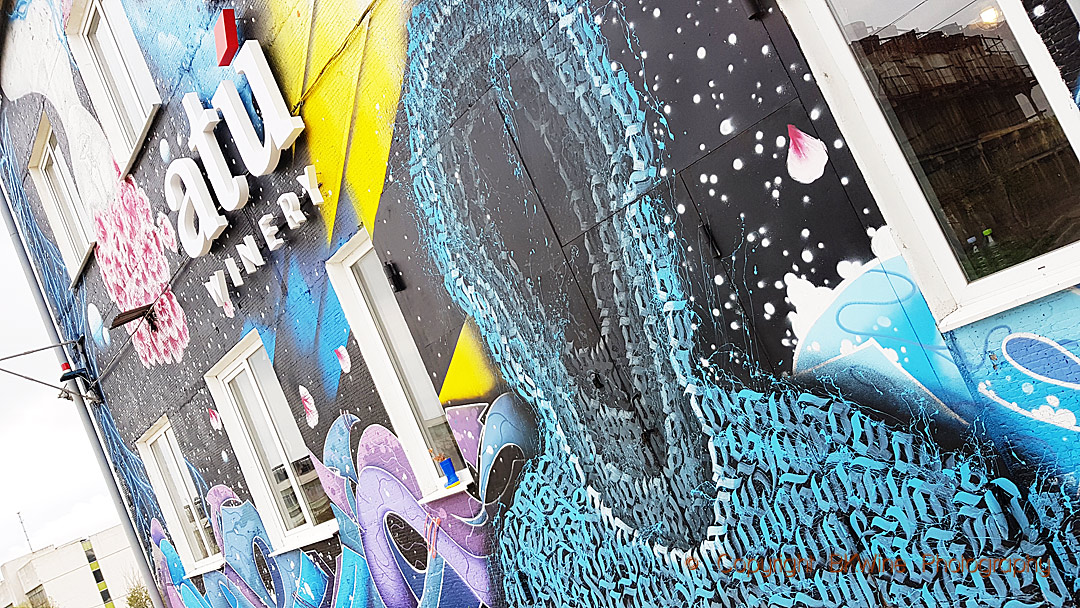
The winery is also young. “We started in 2016”, says Vlada. “And as we are very close to Chisinau, we decided to call it “Urban Winery”.
Being close to the capital means that they don’t have any vineyards nearby. The vineyards are in fact 100 kilometres away. Here Victor and Vlada also have their second, and probably main, activity. As the only winery in Moldova, they have their own grapevine nursery which they started in 2000. Well, it is not just for them. It is, in fact, the biggest vine nursery in Eastern Europe. They sell vines to all the neighbouring wine countries.
Atú Winery is small but neat. They now produce 20,000 bottles. “We have the capacity for 100,000 bottles”, says Vlada. “We will grow, but slowly, maybe with 5000 bottles a year.”
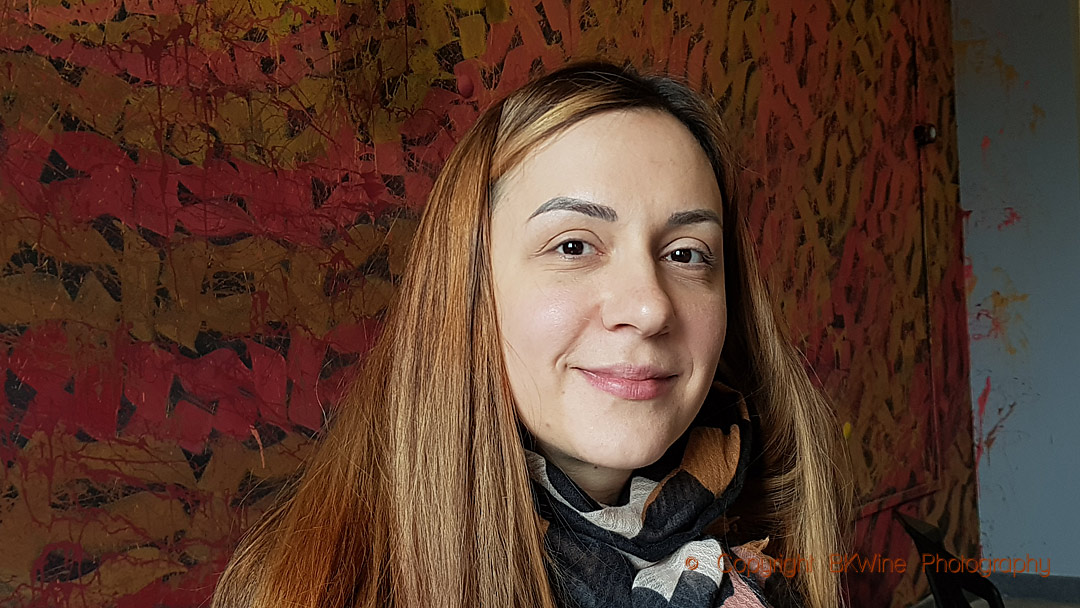
I wouldn’t be surprised, however, if it goes quicker than that. They have a big demand for their wines. They sell them at the winery, in wine shops and also small quantities on the export market.
“It is important for us to make authentic wines”, she adds. She and Victor are themselves the winemakers. “At harvest time we invite people to help us in the winery. It is a great opportunity for them to see the vinification process.”
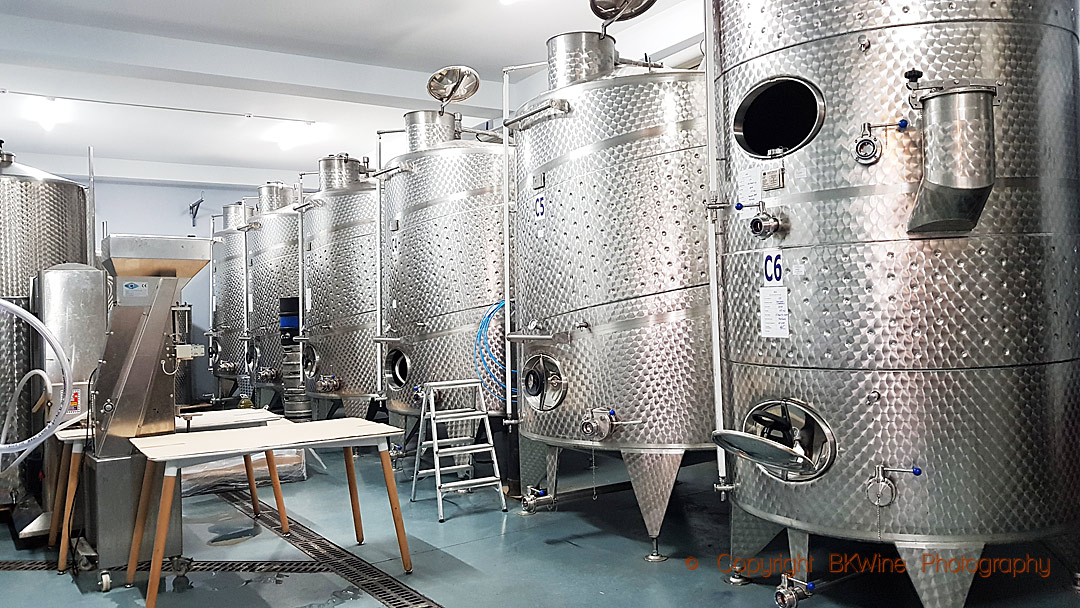
“We use local grapes a lot”, explains Vlada. “Feteasca alba, condrinski, viorica, florichia… They are all well adapted to our climate here. Florichica, viorica and condrinski are crossings made here in Moldova during Soviet times”.
Atú definitely makes exciting wines, wines with personality. They use different labels for different styles. The flowers on the label indicate a local variety, a man’s face indicates French varieties.
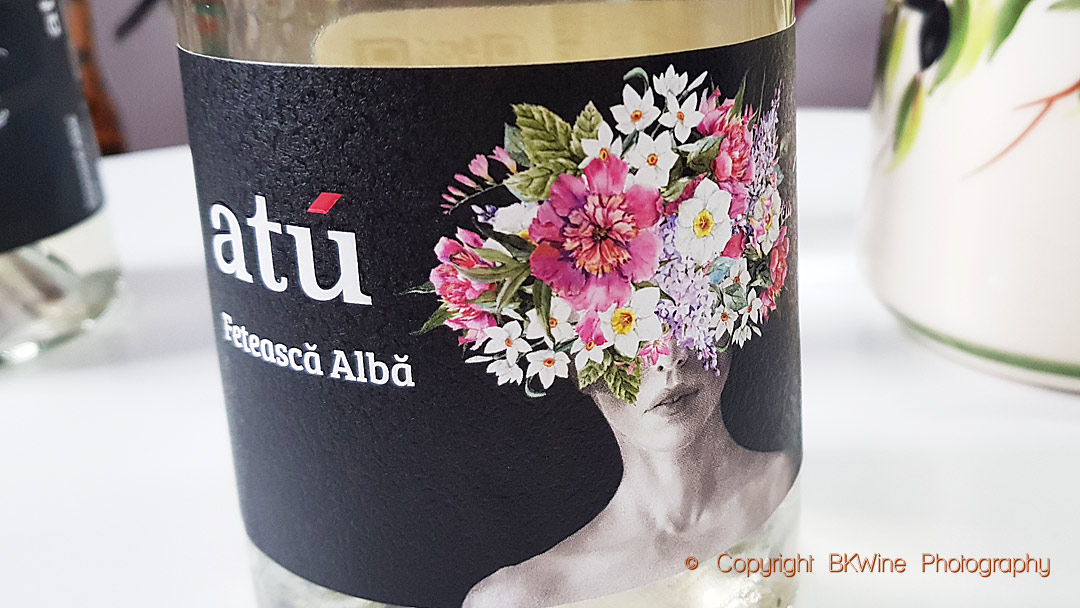
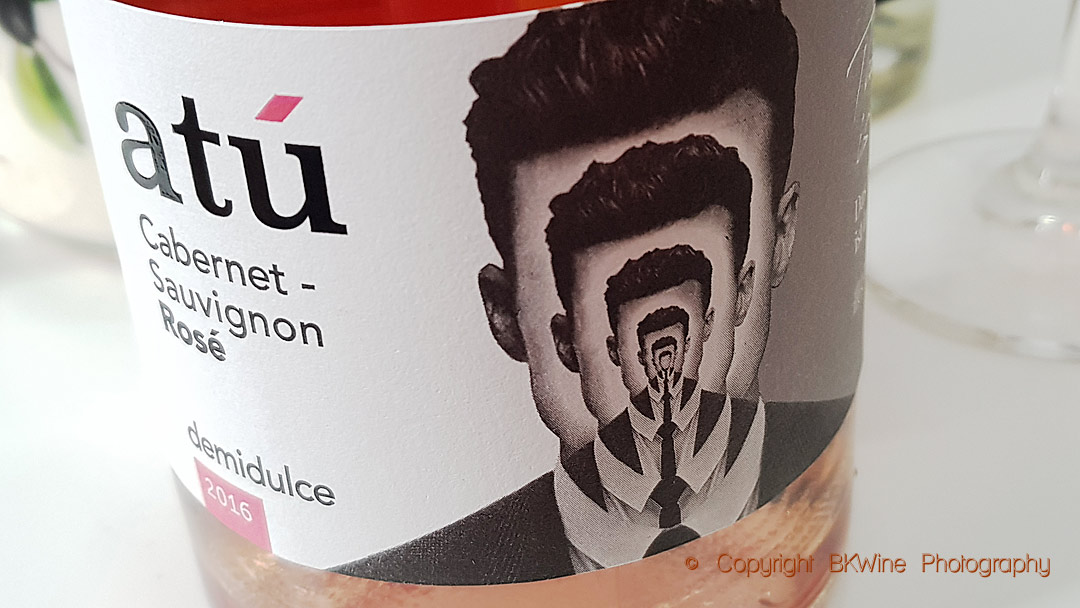
The Atú Feteasca Alba 2018 has floral aromas on the nose and a dry and fairly rich palate (~6 euro). Atú Viorica (which means violet) is quite aromatic and also floral on the nose with a long, dry and incredibly fresh finish. “There are only about 50 hectares of viorica in the country at the moment”, says Vlada. “It is also a good grape for sparkling wines.”
The Atú Red 2017 is made from feteasca neagra, cabernet sauvignon, merlot. This is the first vintage. It has no barrel ageing. It is a very pleasant wine, with fresh dark berries, quite unpretentious and easy drinking but with structure. For the 2018 vintage they will do a non-oaked version and an oaked version of this wine.
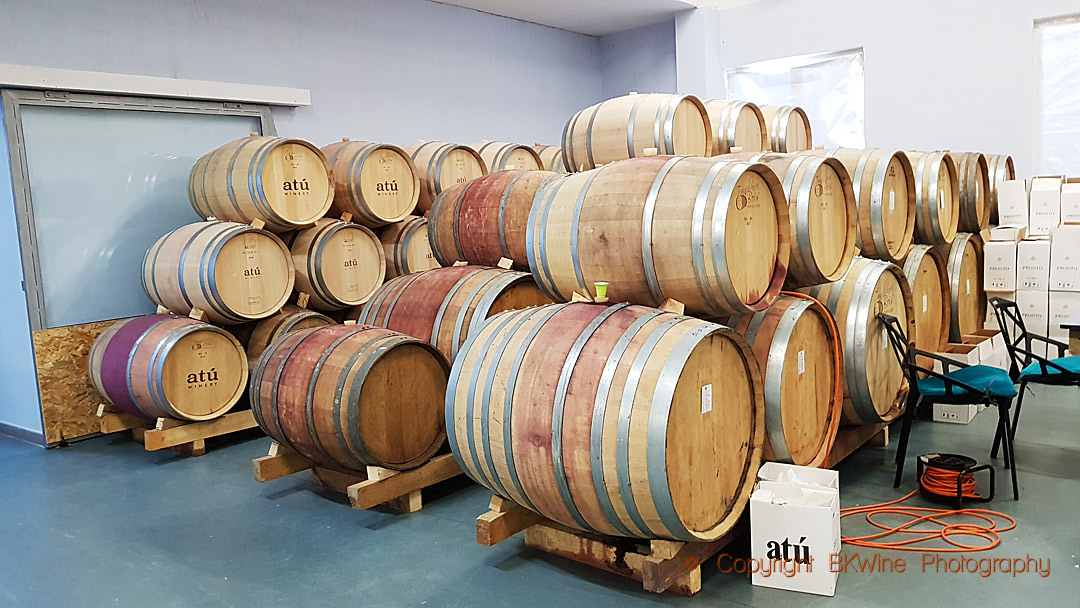
We also tasted an Atu Codrinski 2018 from the barrel where it had just been put together with a small proportion of saperavi. It will spend one year in the barrels. Tasting it now, it was delicious, quite light in style, elegant, with good fruit. I wouldn’t mind seeing it in bottle already.
Atú also makes an interesting gewurztraminer that ferments slowly over a period of two years. In winter the fermentation stops and it restarts again at springtime. The result is semi-sweet, very complex and flavourful.
Atú means strong point. And this winery has many of them.
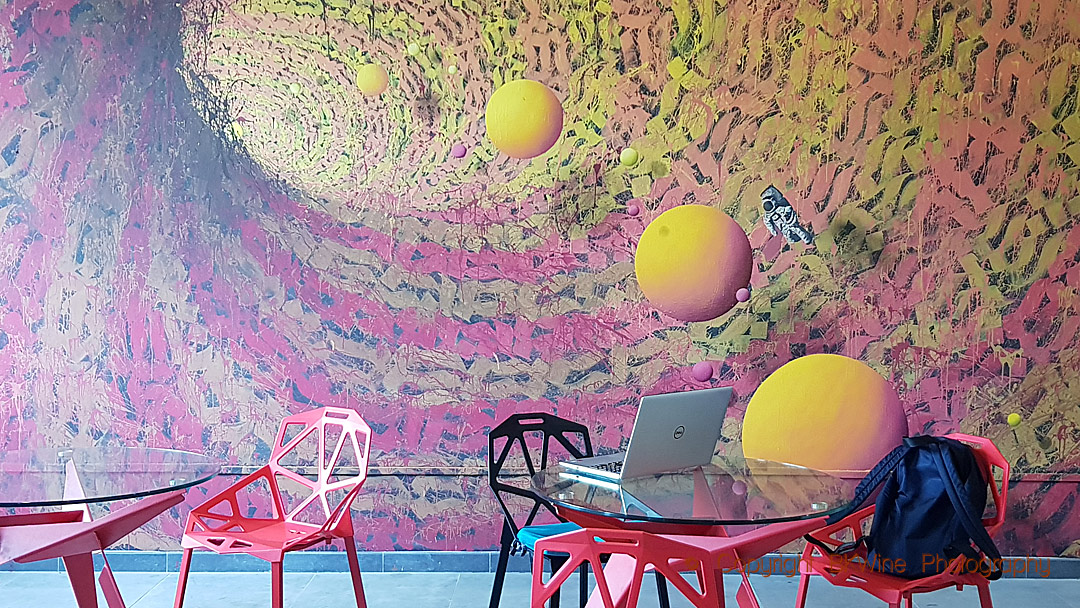
Sava Winery, Codru
Mihai Sava is an example of someone who has developed his home wine production into a small business. To make wine at home, just for domestic consumption, is something that is very common in Moldova. It accounts for a quite significant part of the total production. But so far few have taken the step to move to commercial production.
Already 12 years ago Mihai Sava started to bottle his wines. “When you have your name on the label, you must have good quality,” he says.
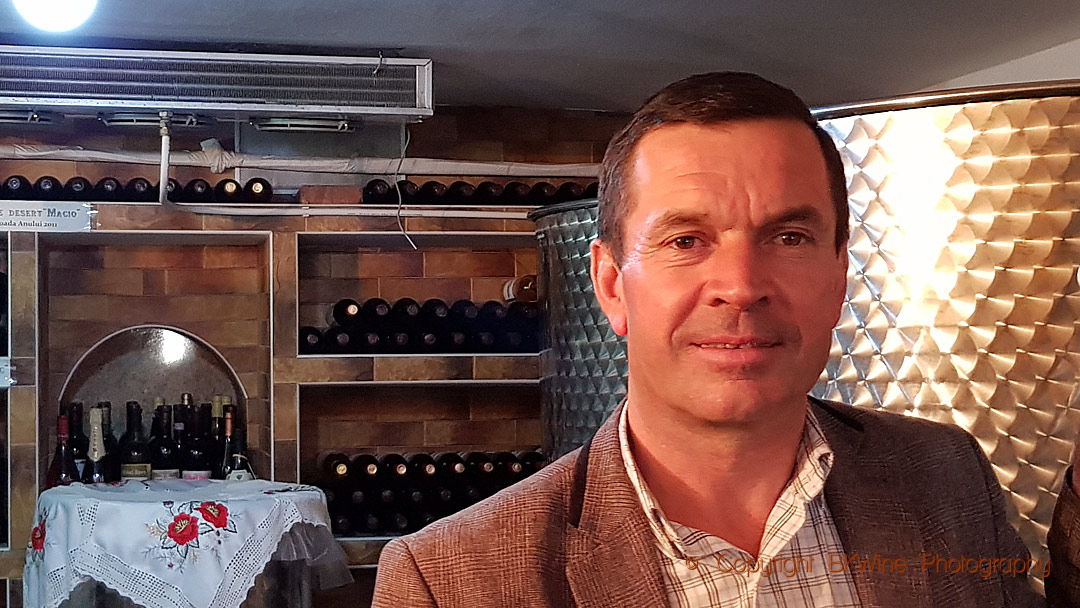
In 2014 Mihai benefited from a project initiated by the National Office for Vine and Wine in Moldova (also known as ONVV or Wine of Moldova), aimed at obtaining better quality wines in the country. With the help of a consultant, he improved his winemaking skills. He has invested in a cooling system which, he says, has been very important for the quality of his wines.
The production is now 13,000 litres, still made at home. And visitors who came to taste the wines are received in the most welcoming way into the home of Mihai and his wife Valentina.
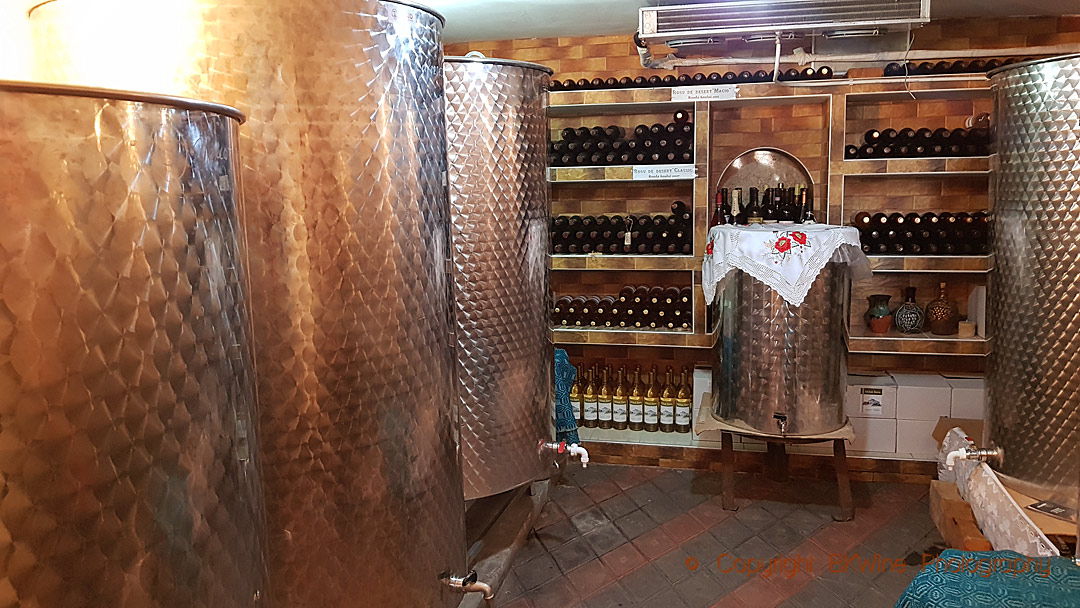
For the moment Mihai has three hectares planted with vines. He plans to plant more, maybe another three hectares. He would like to have more local grapes, such as feteasca and rara neagra. He doesn’t have them at all today. He buys some traminer grapes. The other grapes he uses come from his own vineyards.
He makes around nine different wines so the quantities of each of them are by necessity small. He works without many additives and always with the natural yeast.
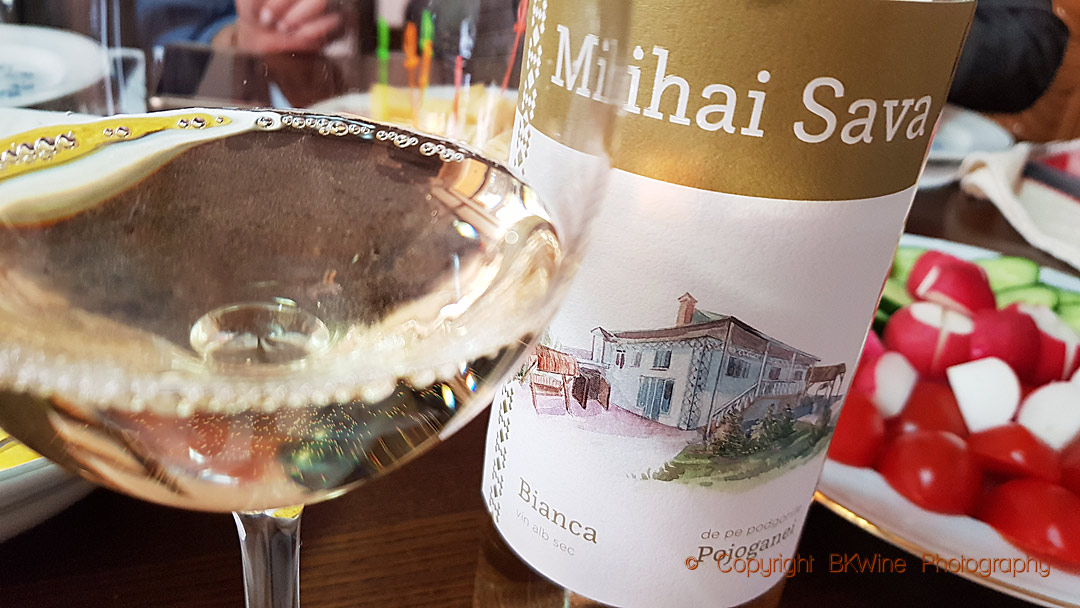
His Sava Bianca 2017 is made from the very unusual grape with the same name, bianca. “Everyone else has French varieties, such as sauvignon blanc etc.”, he says. ”I am the first producer to bottle a wine made from bianca.” He realised that the grape had a good resistance against diseases and on top of that a very good freshness and fine aromas.
I like his wine Bianca very much. It is full-bodied, flavourful with a golden colour and a clean, persistent finish.
A trip to Alsace inspired him to make a wine from traminer. His Sava Traminer 2017 is pleasant and aromatic in the easy-drinking style. The dry Sava Rosé Merlot has a mouthwatering cherry and raspberry fruit.
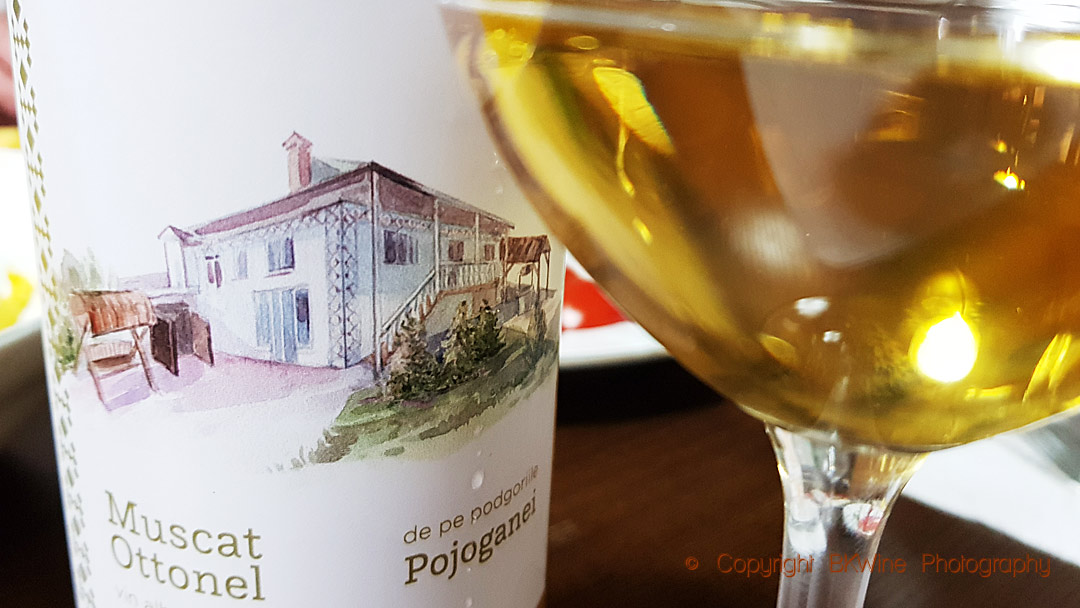
We tasted the red Sava Rosso Sec 2018 from the tank. The grapes are merlot and cabernet sauvignon. The wine is spicy with fresh herbs and a hint of volatile acidity which gives complexity. Sava Cabernet Sauvignon 2018 feels more extracted than the Rosso Sec but it is still juicy and quite smooth with fine cassis aromas.
The dry Sava Muscat Ottonel 2015 is aromatic and not too overwhelmingly aromatic as muscat wines sometimes tend to be. The sweet Muscat Ottonel has a delicious nose of apricots, peaches and roses. Mihai makes a few other wines and even a cabernet sauvignon blended with a Vitis labrusca grape, highly unusual. The wine is surprisingly good, spicy, herbal and smooth on the palate.
Sava makes lovely wines, easy to enjoy. Not least with the delicious local food, everything home-made, that Mihai and Valentina generously serve during the tasting.
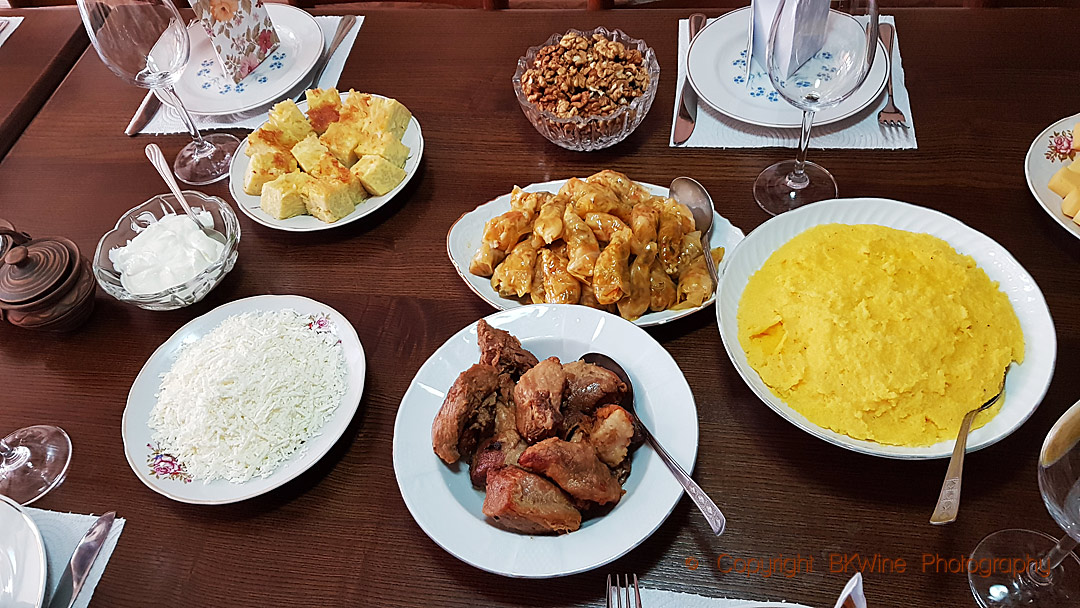
Et Cetera, Stefan Voda
The brothers Alexandru and Igor Luchianov worked for some time in the United States and then came back to Moldova to start a winery in 2003. Their first vintage was 2009 and Alexandru, the winemaker of the two, now produces some easy-drinking whites and reds as well as more serious ones.
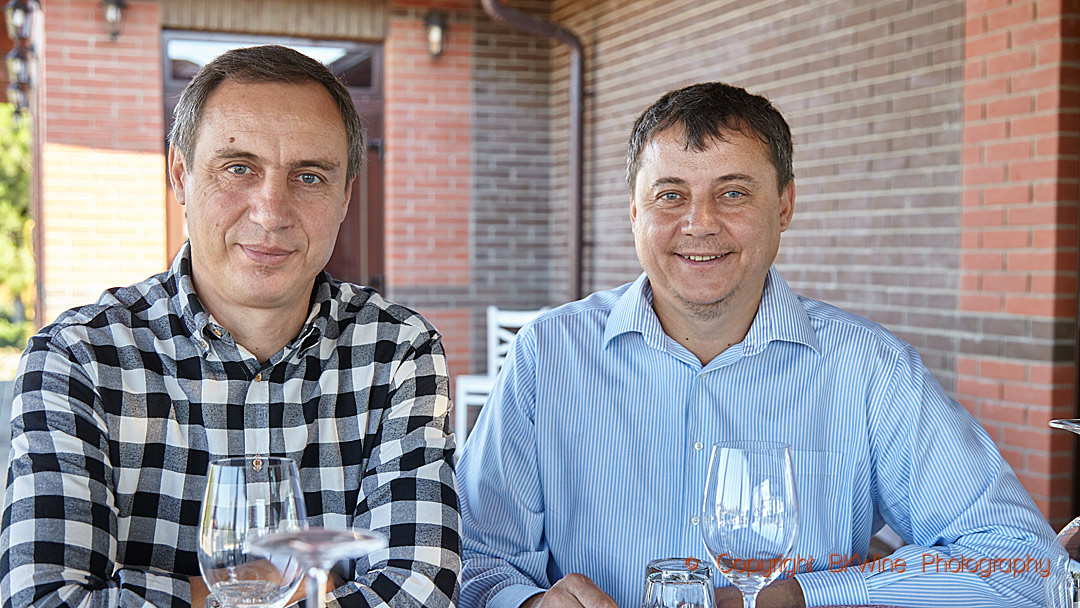
Et Cetera Petrichor (meaning aeroplane), a blend of chardonnay and sauvignon blanc, is light in style with nice freshness and a bit of body although unpretentious (~5 euro). The red Et Cetera Petrichor 2015 is made with merlot and aged only in stainless steel. It is easy-drinking wine with ripe fruit and some tannin structure. I enjoyed the Et Cetera Rosé 2017 from cabernet sauvignon with its very refreshing acidity and rich red fruit flavours.
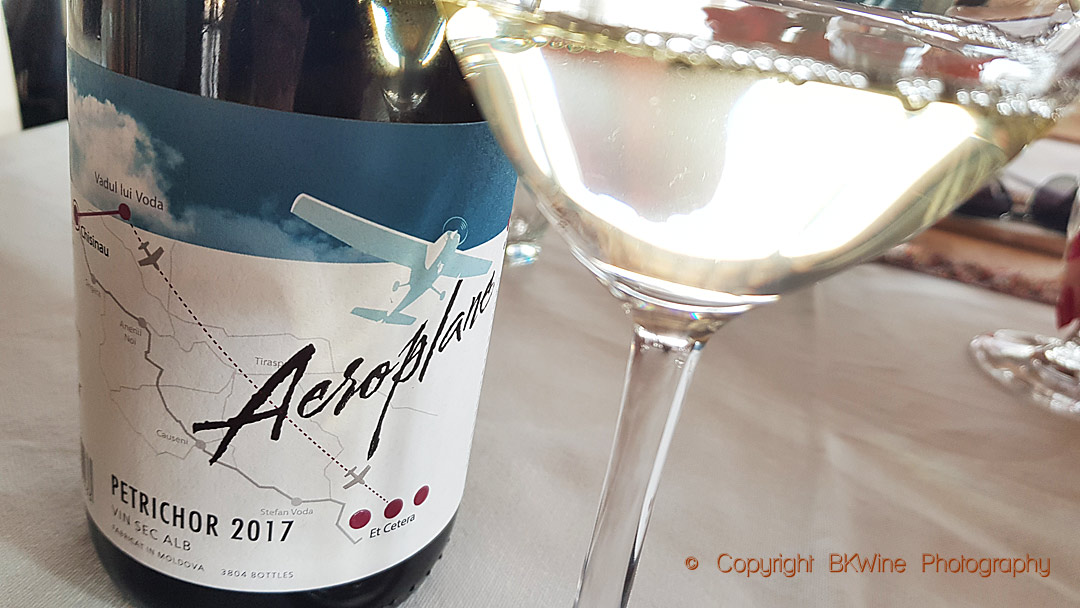
A more serious white is the Et Cetera Cuvée Blanc 2017 from chardonnay, sauvignon blanc, pinot blanc and pinot gris. All the grapes are pressed and fermented together. ”Some grapes ripen earlier than the others, they will balance each other”, says Alexandru. The fermentation starts in tank and continues in oak barrels. It is a full-bodied wine, with well-balanced oak aromas, rich in taste but with a good drinkability.
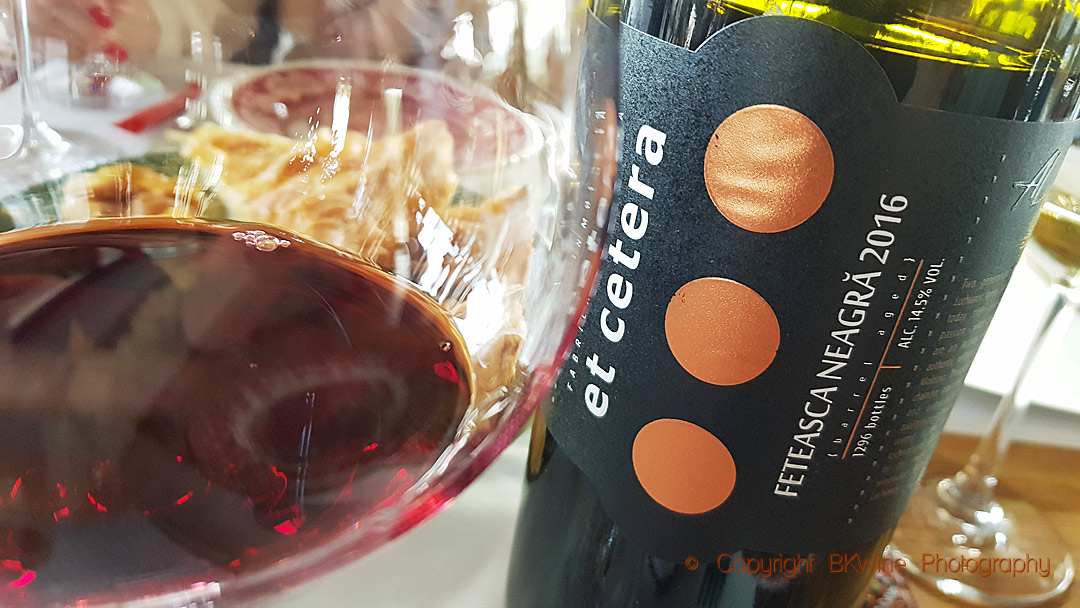
The red Et Cetera Feteasca Neagra 2016 has one year in new oak barrels. But the wine is fruit dominant, with the oak flavours very much in the background. It is pleasantly fresh with aromas of cherries and cherry stones, which, says Alexandru, comes from the grape.
Et Cetera is situated in the far south-east corner of Moldova, close to the border to Ukraine.
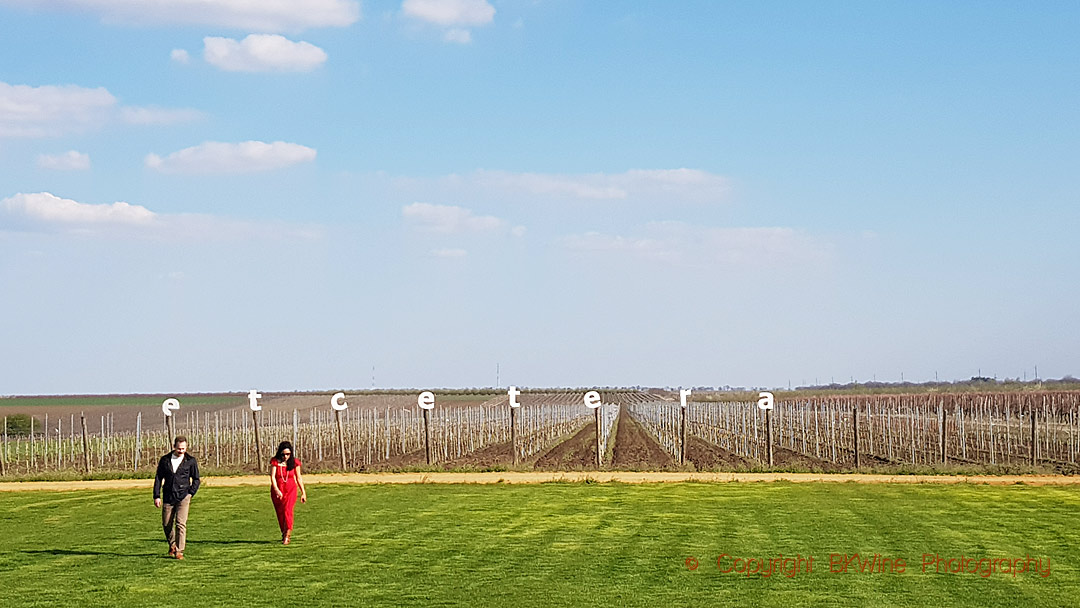
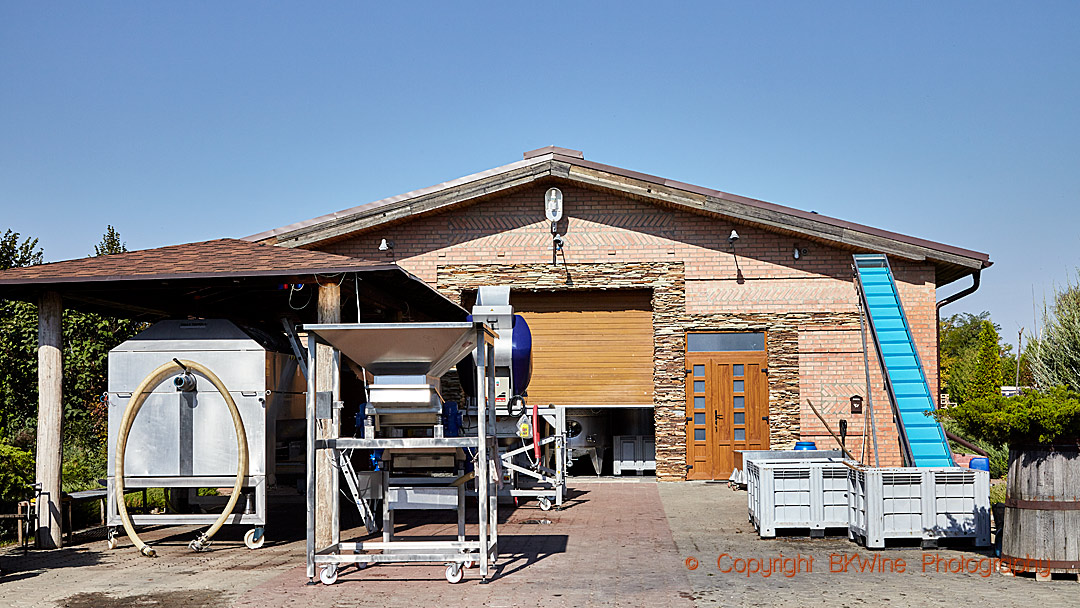
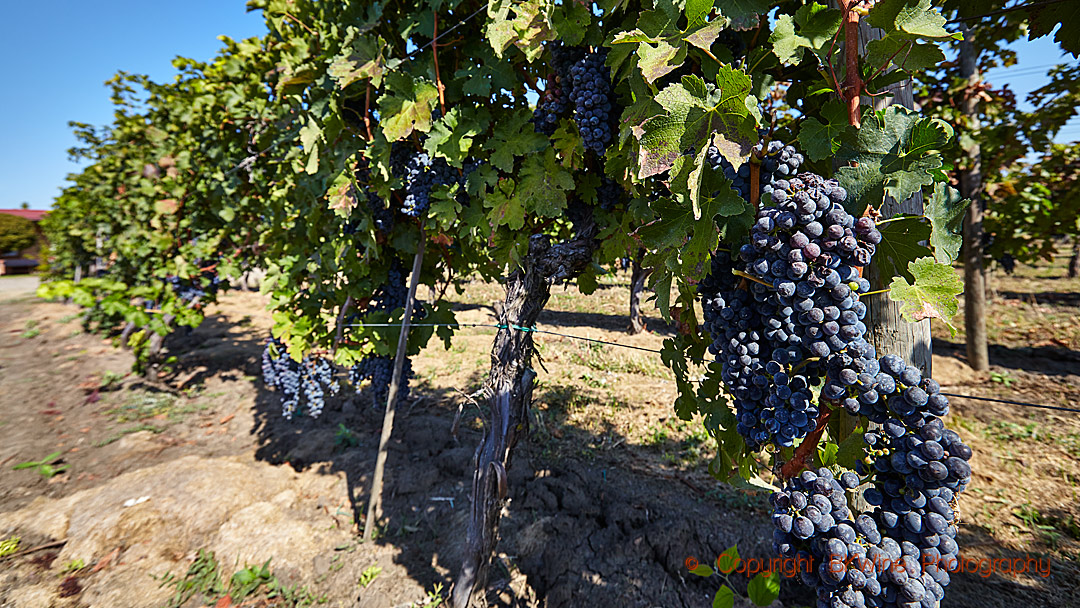
Equinox, Stefan Voda
Constantin Stratan created his small winery in 2002 with 2 hectares. At the time he had already been in the wine business for some time. He is one of the pioneers among the small producers and highly respected.
He now has 5 hectares of the indigenous rara neagra, feteasca neagra and feteasca alba as well as chardonnay, cabernet sauvignon, merlot, malbec and saperavi. His first vintage was in 2006, 800 bottles of cabernet sauvignon.
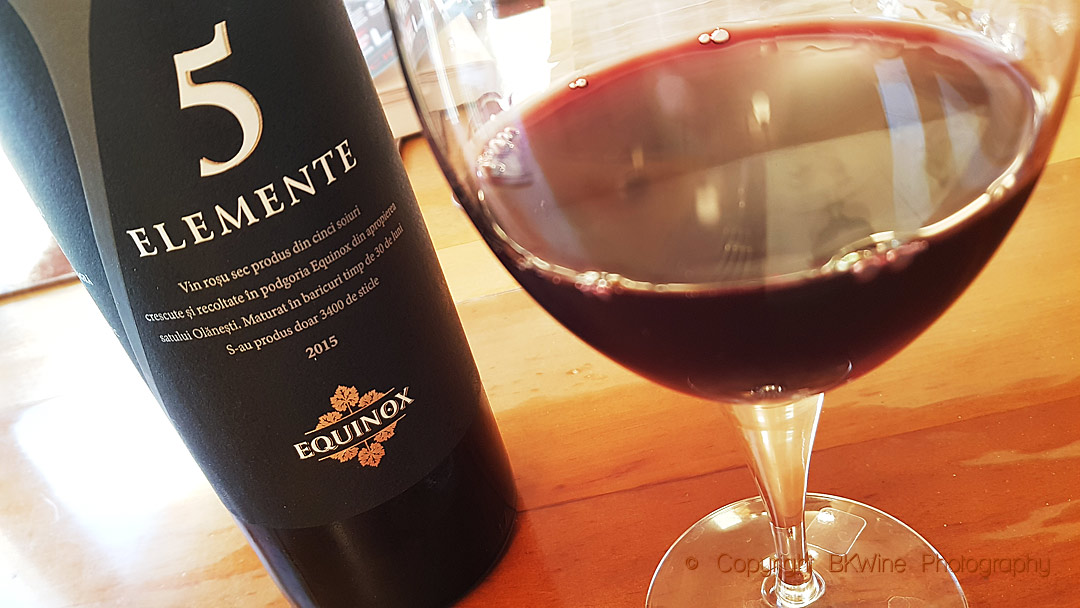
One of his most well-known wines is Equinox 5 Elemente. It is a blend of five red varieties grown at the estate. It has a silky finish with dark, ripe and concentrated fruit on the nose and palate. It is a muscular wine but the balance is good. It has 30 months of oak ageing.
The prestige cuvée Equinox Echinoctius is made with cabernet sauvignon, rara neagra and merlot. It has powerful and generous fruit, quite a lot of oak and a big body. Not a wine to drink on its own. A nice dinner helps balance the wine.
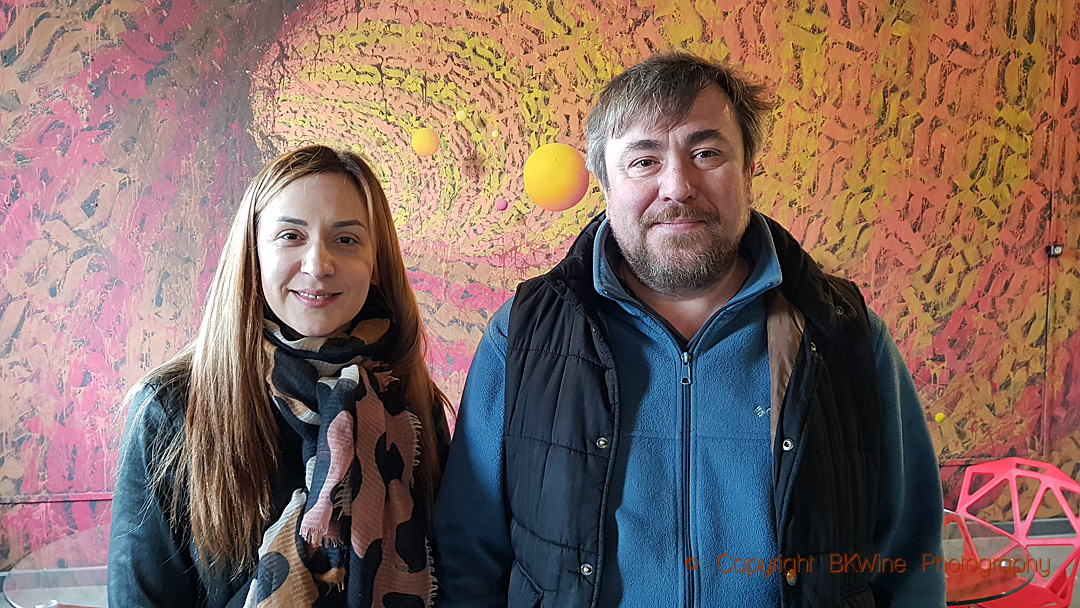
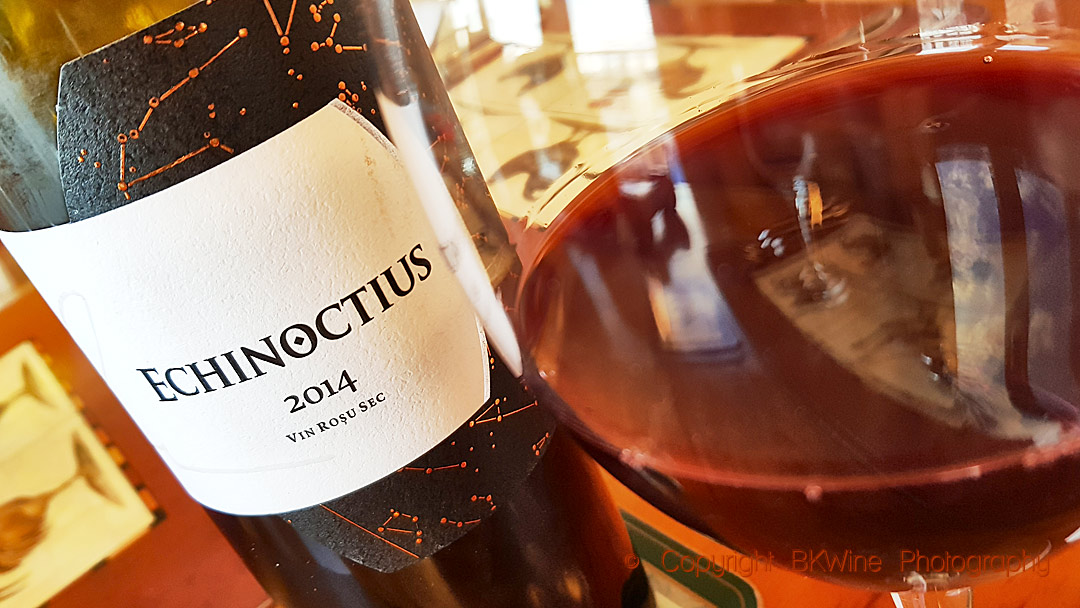
Carpe Diem, Codru
The owner, Ion Luca, also owns a very popular wine shop/wine bar in Chisinau. Here you can buy his wines but also wines from many other good quality producers in the country.
His family has been involved in winemaking at state-owned wineries for 4 generations. But Ion always wanted to have his own winery. In 2014 he created his Carpe Diem wine range. He likes to work with native grapes. His Carpe Diem Feteasca Alba is superb. He has his own vineyards and also buys grapes. His labels featuring happy people screaming are original and definitely noticeable.
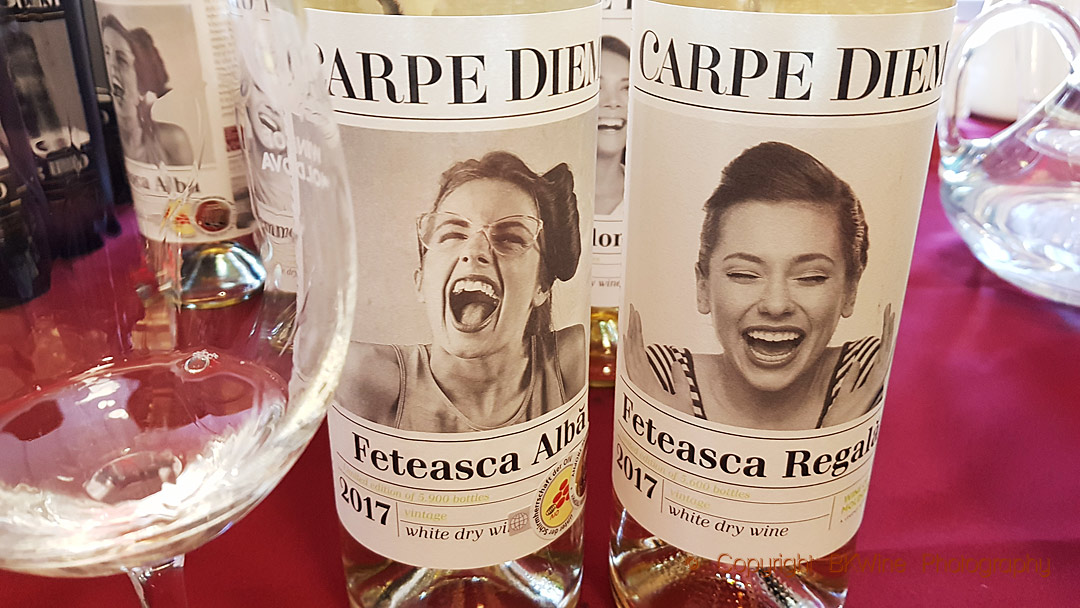
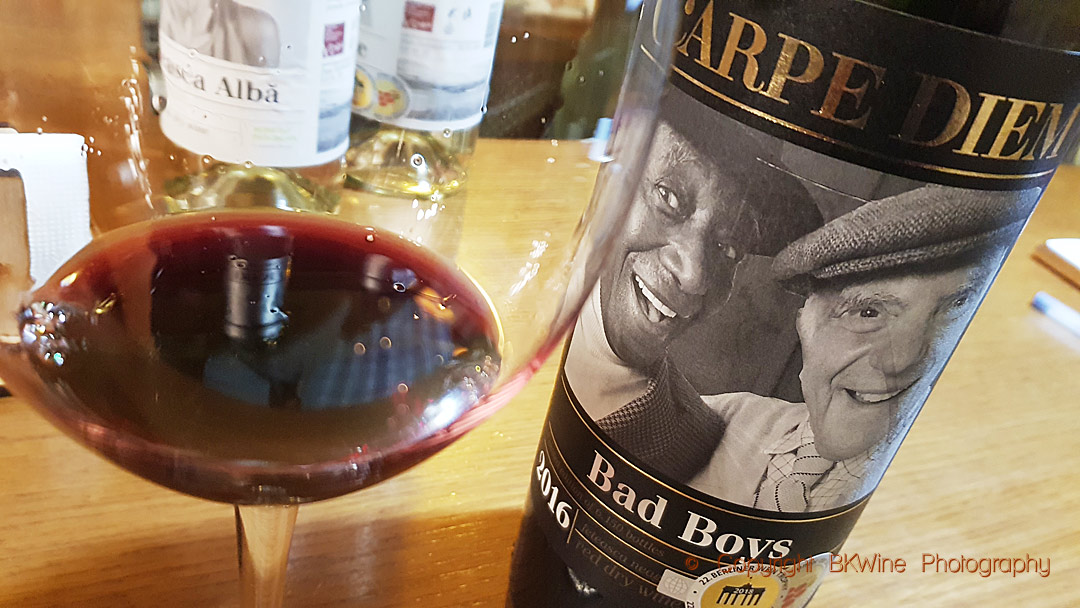
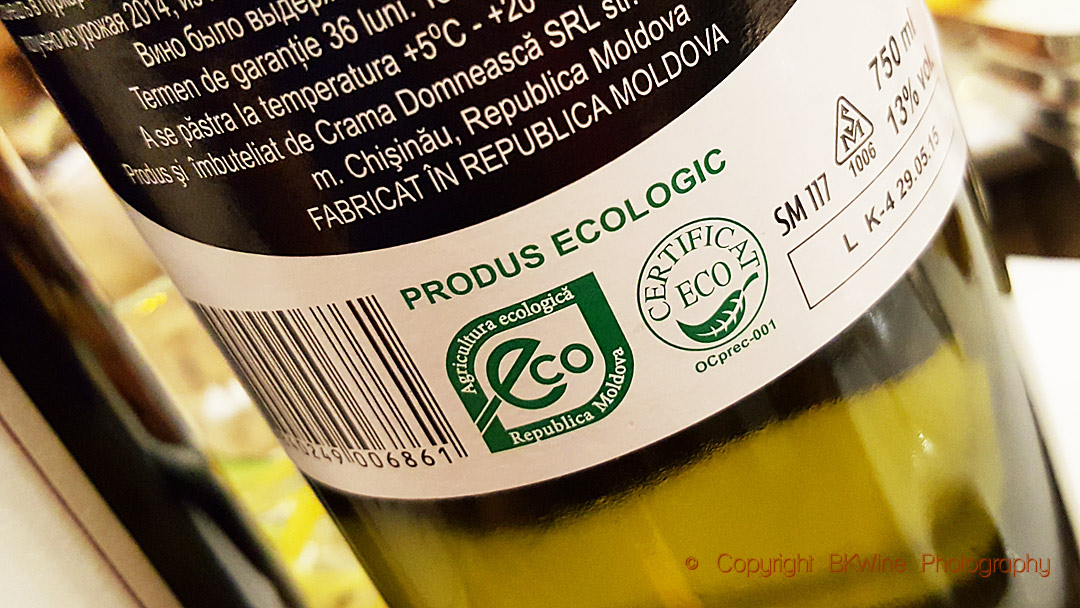
Novak Winery, Valul lui Traian
The enthusiastic Andrey Novak has made himself a big name among the small producers in Moldova. His family has an important bulk wine business and Andrey makes small quantities of boutique wines in the renovated winery. He is the only one in Moldova so far to use the white grape alb de onitcani. Together with chardonnay and riesling, it gives a very pleasant, fresh, floral and quite complex wine.
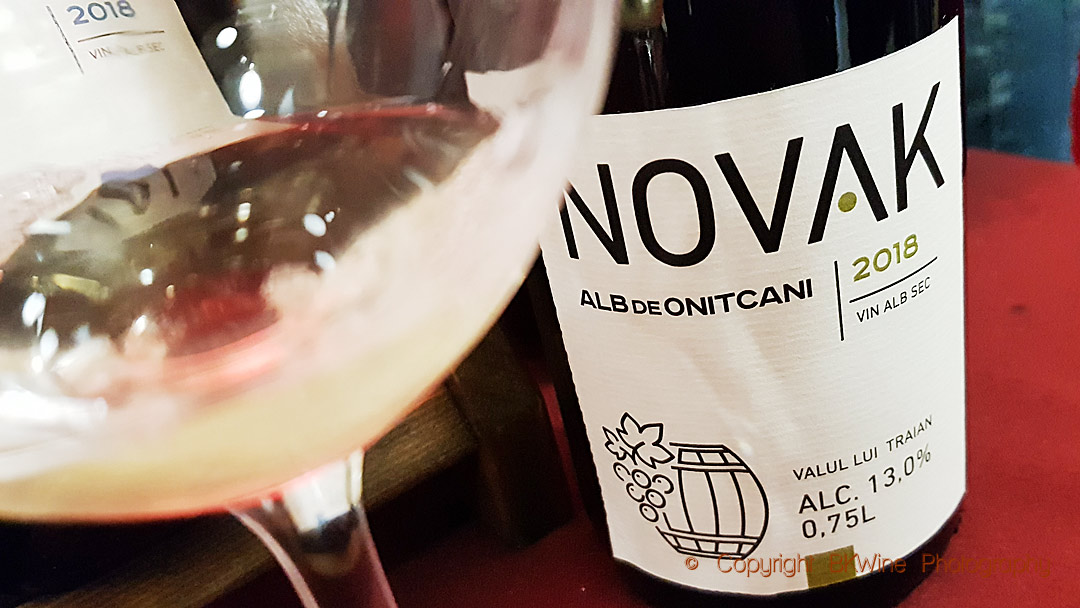
Minis Terrios
Minis Terrios Winery was founded in 2013 by Dan Prisacaru. At the time he had just returned from wine studies in Dijon in Burgundy. His first vintage, a merlot, was also a 2013, so it was a project that developed very quickly. Up until now, the grapes have been bought from grape growers producing high-quality grapes. Now, however, he also has his own vineyards.
Minis Terrios Rosu Imparat 2015 is made from feteasca neagra, rara neagra and a little bit of cabernet sauvignon. The wine has a good tannin structure but is still quite elegant. A delicious, very drinkable wine.
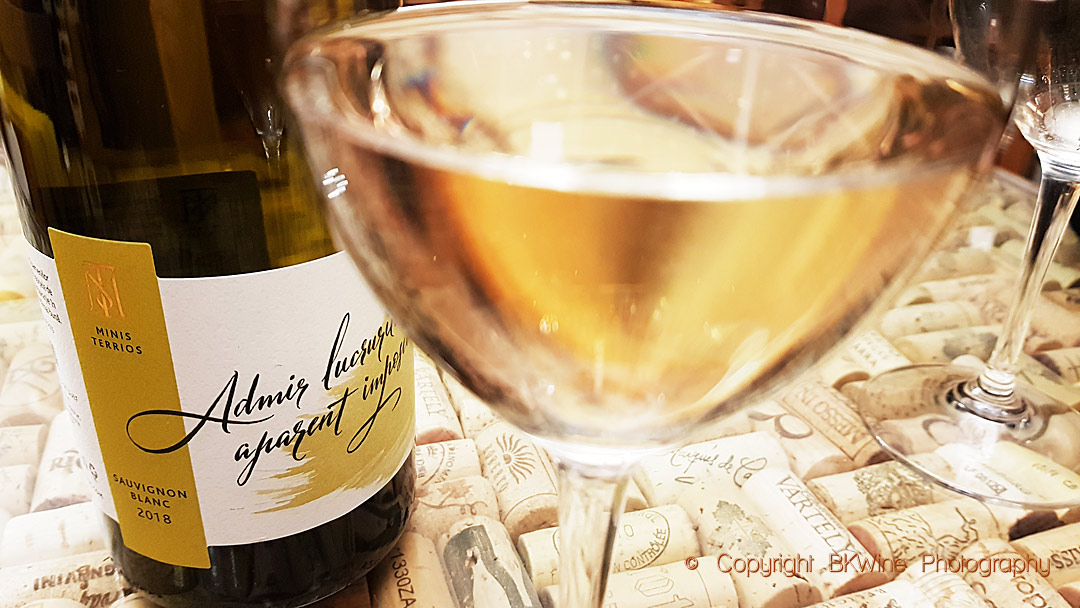
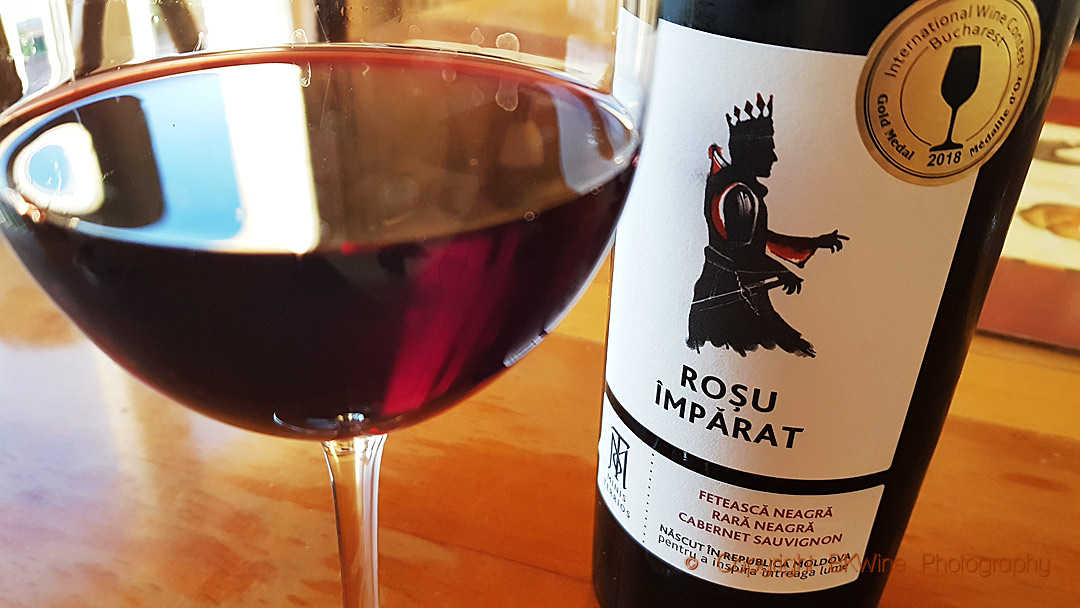
Vinaria Pripa, Stefan Voda
Vinaria Pripa is a young winery but one that has already made a name for itself in the Purcari region in the south-east of the country. Very small at the moment, only 2 hectares. Their Vinaria Pripa Rara Neagra 2017 is delicious in the easy-drinking style but still a serious wine. Maybe a little bit too much oak flavours, although with a good dinner the balance can be just right.
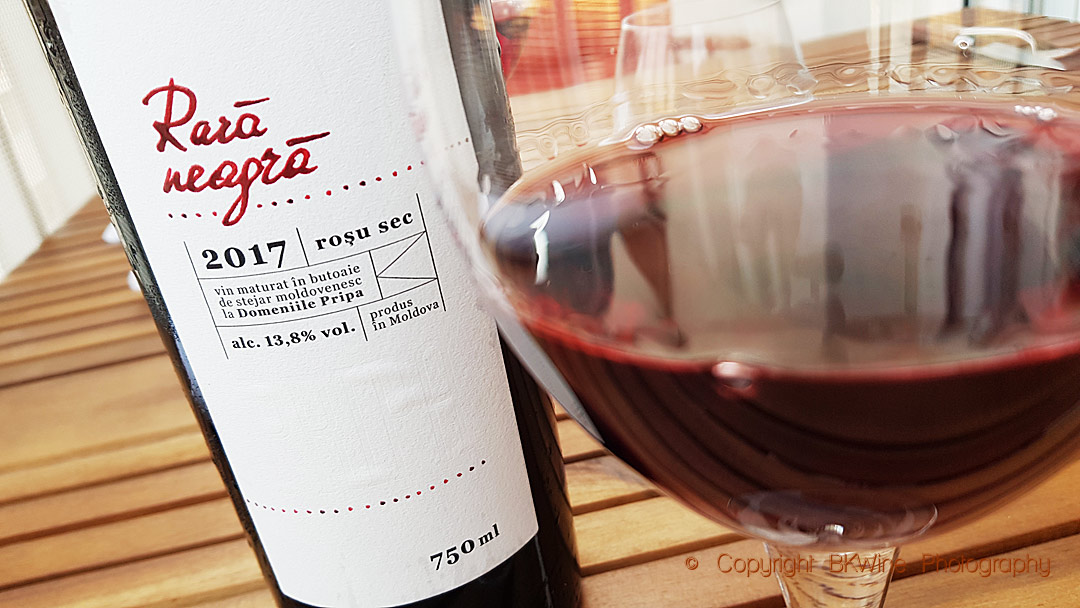
Pelican Negru, Stefan Voda
Gheorghe Arpentin is the director of the National Bureau of Vine and Wine of Moldova (also known as the ONVV or Wine of Moldova). Together with a friend, he planted vines in 2000 in the village Olanesti in the Purcari region. One of the specificities of the planting was the high density. They planted 5000 vines per hectare instead of around 2500 which is usual in Moldova. The reason is, of course, their aim to produce high-quality wines.
Gheorghe uses a biodynamic approach, one of the few or perhaps the only one in Moldova. A hint of a “natural” style of winemaking can be perceived in the wines with names such as Pelican Negru Soft Red, Velvet Red and Silk Red.
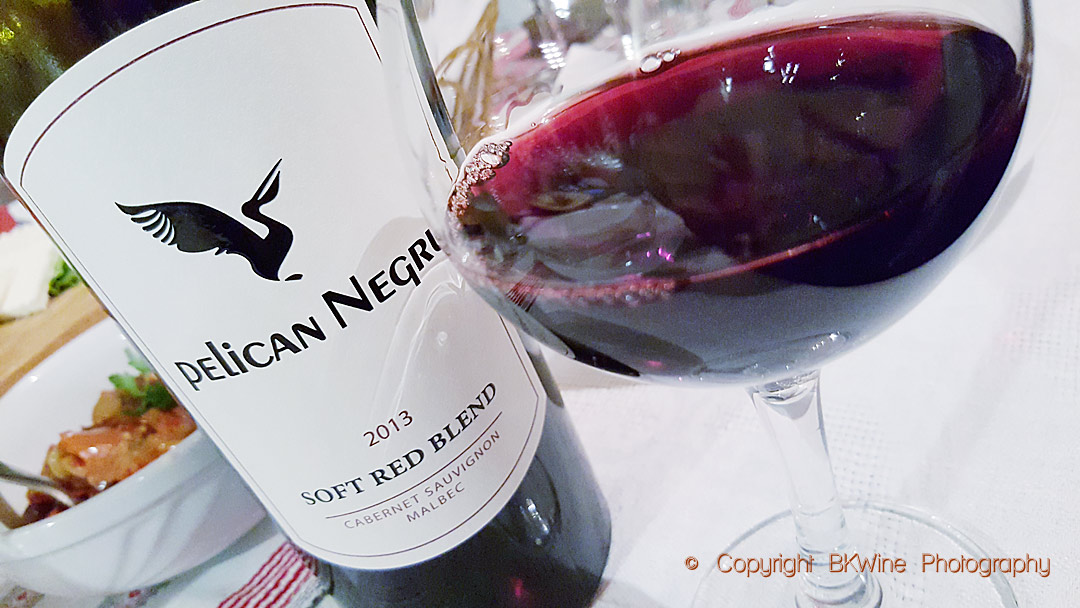
There’s more
And a few more names not to miss if you have the good fortune to run into them:
- Timbrus, with a Spanish winemaker, Manuel Ortiz
- Mr Snob and Lalelele (Vinum), only a few years old
- Unicorn Estate, started in 2014 by Sergiu Galushka and Ion Sirbulet
- Vinaria Nobila, started in 2004 by Oleg Boboc
- Crescendo
- Mezalimpe
- Molda
Most of the familiar names among the Moldovan wine producers tend to be big. It can be particularly interesting and exciting to try some of the smaller ones. And it is also important for the whole country’s wine industry that more new producers emerge. So do taste then ones mentioned here if you get the chance.
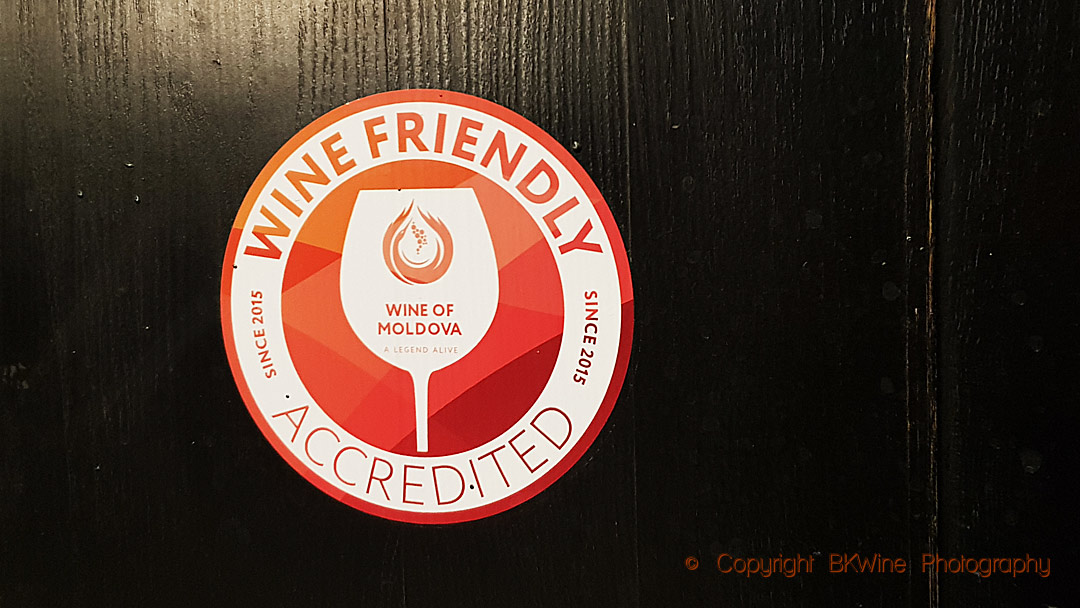
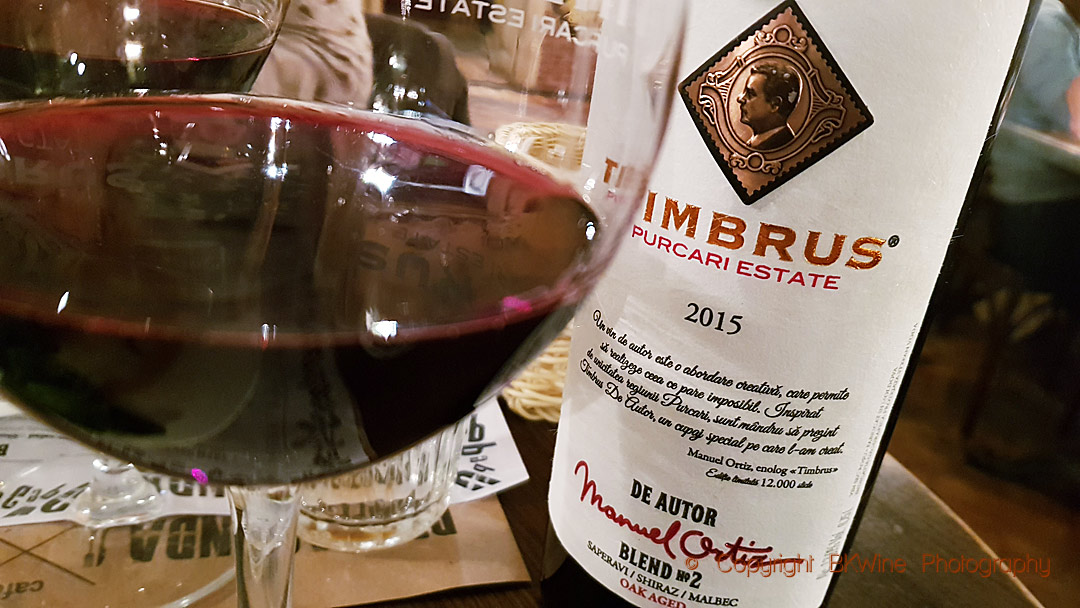
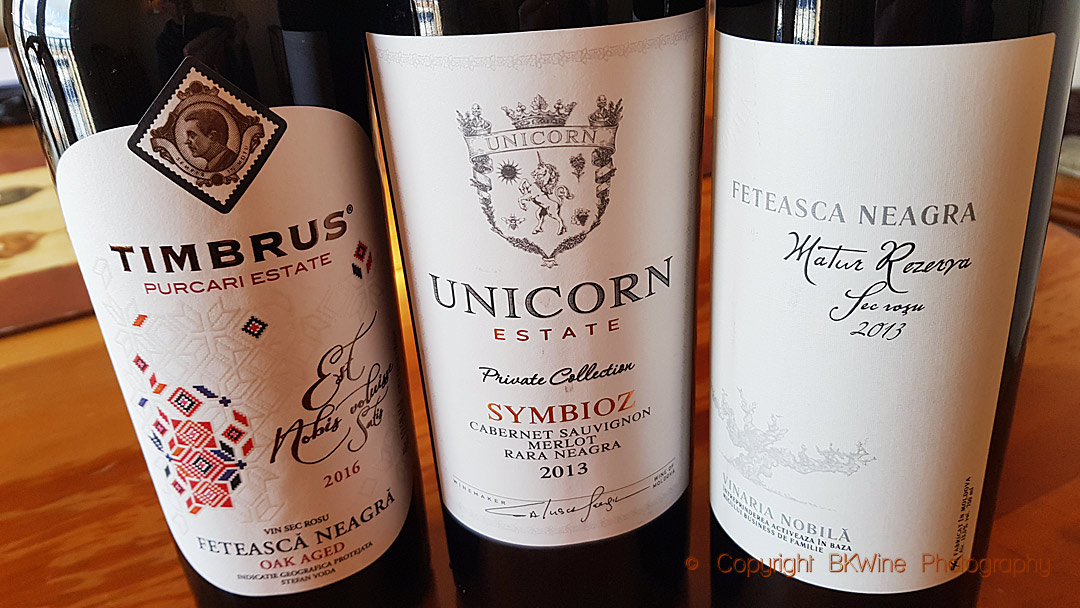



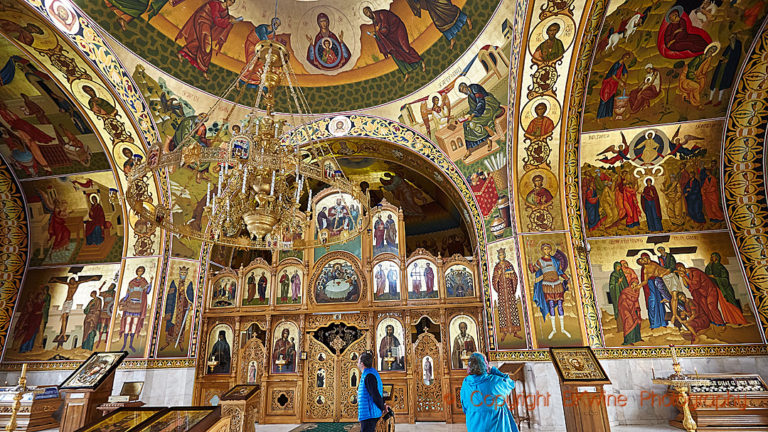




3 Responses
Like to have the contacts of those wines producer.
Morrisons have been importing a cheap Pinot from Moldova which they label as Myton Hill, they now no longer stock it, my wife likes it, not the highest class of wine I know but each to their own pallet, any chance you would know the Winery in Moldova that produced this please?
A very long shot but any help will be much appreciated.
Hi,
No, unfortunately not. I think your best bet is to trace it through the place you bought it or through the importer.